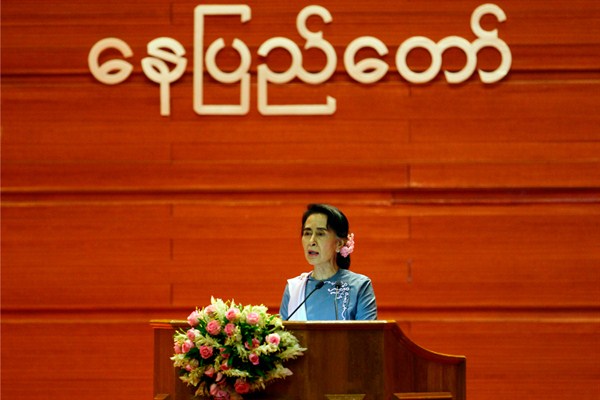Over the past week, Myanmar held its eagerly awaited national peace conference in Naypyidaw, with hundreds of the country’s ethnic armed groups gathering in the capital alongside the government, parliament, the powerful military and political parties. The conference was a centerpiece of the agenda of the new administration led by the once-opposition National League for Democracy (NLD). It was designed to be a kind of sequel to the Panglong Conference held in Myanmar in 1947, when NLD leader Aung San Suu Kyi’s father, independence hero Aung San, presided over the last meeting that brought together the country’s numerous factions and rebels.
At the 1947 Panglong talks, many ethnic minority groups agreed to participate in the newly independent state, but a formal and durable peace was not achieved. Aung San was soon murdered, and Myanmar weathered about 15 years of shaky democracy before a military takeover in 1962. After 1962, the armed forces crushed the idea of a sustainable, federal democracy, which seemed a natural fit for such an ethnically and religiously diverse country. As a result, civil wars raged between ethnic insurgent groups and the central government.
For decades, major portions of the country have not been under government control. Today, much of Myanmar’s northeast, bordering China and Thailand, is still controlled by the United Wa State Army (UWSA), the most powerful ethnic insurgent group—so militarily powerful that Wa leaders now have essentially their own mini-state. The UWSA reportedly has some 30,000 men under arms, if not more, and has been on a weapons-buying spree in recent years.

